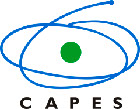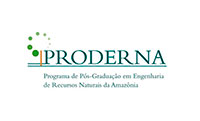WREN 2016
The Workshop on Renewable Energy Sources and Nanotechnology
SEMINARS

Seminar 7: Thermal effusion of chemical species from graphene oxide.
Speaker: Francisco das Chagas Marques
Summary: A large variety of carbon based nanomaterials have been investigated in the last two decades such as fullerenes, nanotubes and graphene. In this matter, graphene has received a great deal of attention due to its characteristic of been a 2D material with different physics from other 2D materials. The electrical, optical and mechanical properties have intriguing characteristics. The conductivity of grapheme is close to that of silver and high Young’s modulus. However, the production of large amount of graphene is
expensive. One cheap procedure to obtain graphene is through the oxidation of graphite. However, the obtained graphene is oxidized, receiving the name of graphene oxide, GO. Thus, some procedures have been developed to reduce the GO to a less oxidized form of graphene, the so called reduced graphene oxide, rGO. In this work we performed thermal effusion of species from GO in order to determine the releasing temperature of the chemical species. The measurement have been performed in the room to 1000 0C. Most of the oxygen and other species is removed in the 200-300 0C. Several species have been identified, such as oxygen, hydrogen, nitrogen, sulfur and others. The conductivity increases by 7 orders of magnitude in this temperature range. Raman, XPS e FTIR were performed to supply data for the interpretation of the results.

Seminar 9: Functionalization of reduced graphene oxide (rGO) nanoplatelets.
Speaker: Antonio Riul Junior
Summary: Graphene has attracted a considerable attention of the scientific community in the last couple of years due to its unique physical properties. It is a hexagonal mesh of carbon atoms bonded in a hexagonal sp2 array that can be produced either by mechanical or chemical exfoliation processes. Graphene oxide (GO) is a common precursor for the chemical synthesis of graphene,
obtained here from the Hummers method. GO is an atomically thin sheet of graphite covalently decorated with oxygenated functional groups on the basal plane and at the edges, containing a mixture of sp2 and sp3 carbon atoms, being electrically insulating. The reduced form of graphene oxide (rGO) has a much lower content of oxygenated functional groups, presenting holes in the basal plane (defects on its structure) and physical properties similar to pristine graphene. We show here the functionalization of rGO nanoplatelets using different organic materials, followed by UV-vis, FTIR and electrochemical characterizations. The rGO nanoplatelets were assembled in multilayer structures onto electrodes using the layer-by-layer (LbL) technique. Electrochemical results indicated an enlargement in the current density with increasing number of deposited rGO layers in the LbL structures, independent of the material wrapping the nanoplatelets. It is a promising step for future studies in electron transfer mechanisms focused on biological fuel cell developments.





.png)

Wren 2016. © All Right Reserved


